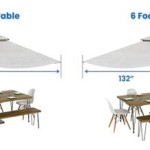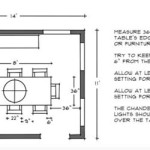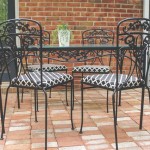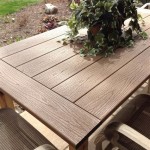Plants for Small Patios: Maximizing Green Space in Limited Areas
Small patios present a unique set of challenges and opportunities for gardening enthusiasts. The limited square footage requires careful consideration of plant selection and arrangement to create visually appealing and functional outdoor spaces. Choosing the right plants can transform a small patio into a vibrant, relaxing oasis, while the wrong choices can lead to overcrowding and maintenance difficulties. Success hinges on selecting plants that thrive in containers, offer visual interest, and complement the overall aesthetic of the patio.
When planning a small patio garden, it is essential to consider factors such as sunlight exposure, soil composition, and watering requirements. Different plants have varying needs, and understanding these needs is critical for ensuring their health and longevity. Additionally, the design and layout of the patio will influence the types of plants that are most suitable. Vertical gardening solutions, hanging baskets, and strategically placed containers can maximize space utilization and create a layered, dynamic effect.
Selecting Compact and Versatile Plants
One of the primary considerations for small patio gardens is selecting plants that are naturally compact or can be easily maintained at a smaller size. This prevents overcrowding and ensures that each plant receives adequate sunlight and air circulation. Dwarf varieties of trees, shrubs, and flowering plants are excellent choices for small spaces. These plants offer the same aesthetic appeal as their larger counterparts but require less space to thrive.
Herbs are another excellent option for small patios. Many herbs, such as basil, mint, and thyme, are relatively compact and can be grown in containers. They also offer the added benefit of providing fresh ingredients for cooking. Similarly, some vegetable varieties, such as dwarf tomatoes and peppers, are well-suited for container gardening on small patios. These plants not only add visual interest but also provide a source of fresh produce.
Consider also the foliage of the plant. Plants with interesting foliage, such as ferns, hostas, and heucheras, can add texture and visual interest to a small patio garden, even when they are not in bloom. These plants come in a wide range of colors, shapes, and sizes, allowing for creative combinations and personalized designs.
Some examples of plants that thrive in containers and remain relatively compact include dwarf conifers, such as the 'Blue Star' juniper, which adds a touch of evergreen texture. Compact flowering shrubs like dwarf hydrangeas, which offer beautiful blooms in various colors, are also viable. Succulents, with their diverse shapes and low maintenance requirements, are also widely considered. The key to success is researching the mature size of each plant and choosing varieties that will remain manageable within the confines of the patio.
Optimizing Vertical Space
In small patios, utilizing vertical space is crucial for maximizing the available growing area. This can be achieved through various methods, including wall-mounted planters, hanging baskets, and trellises. Vertical gardening not only increases the planting capacity but also adds visual height and dimension to the space. It draws the eye upward, making the patio feel larger and more inviting.
Wall-mounted planters are a versatile option for growing a variety of plants, from herbs and vegetables to flowering vines and succulents. They can be easily attached to walls or fences, providing a space-saving solution for adding greenery. Select planters made from lightweight materials to avoid putting excessive stress on the supporting structure.
Hanging baskets are another popular choice for small patios. They can be hung from railings, eaves, or specially designed stands, creating a cascading effect of flowers and foliage. Trailing plants, such as petunias, lobelia, and ivy geraniums, are particularly well-suited for hanging baskets. Regular watering and fertilization are essential for maintaining the health and vibrancy of plants grown in hanging baskets.
Trellises provide support for climbing plants, such as clematis, climbing roses, and jasmine. These plants can add a touch of elegance and fragrance to a small patio, creating a romantic and inviting atmosphere. Trellises can be attached to walls or fences, or they can be freestanding structures. Choose trellises made from durable materials that can withstand the weight of the climbing plants.
When implementing vertical gardening solutions, it is important to consider the weight and stability of the structures. Ensure that the supporting structures are strong enough to hold the weight of the plants and the containers, especially when they are fully watered. Regular maintenance, such as pruning and training, is also necessary to keep the plants looking their best and to prevent them from becoming unruly.
Creating a Cohesive and Functional Design
A well-designed small patio garden is not only visually appealing but also functional. Consider the purpose of the patio and how it will be used. Is it primarily a relaxing space for lounging and entertaining, or is it intended for gardening and food production? The design should reflect the intended use and create a harmonious balance between aesthetics and practicality.
The layout of the patio should optimize the available space and create a comfortable flow. Avoid overcrowding the area with too many plants or furniture. Leave ample room for movement and ensure that there is adequate seating and table space. Consider the placement of plants in relation to sunlight exposure, wind direction, and privacy concerns.
Choose plants that complement each other in terms of color, texture, and size. Create a layered effect by placing taller plants in the back and shorter plants in the front. Use contrasting colors and textures to add visual interest and depth. Repeat certain elements throughout the design to create a sense of unity and cohesion.
Incorporate functional elements into the design, such as a potting bench, a storage shed, or a water feature. These elements can enhance the practicality of the patio and add to its overall appeal. Choose materials and finishes that complement the style of the patio and the surrounding landscape.
Pay attention to the details, such as the choice of containers, the type of soil, and the watering system. Select containers that are appropriate for the size of the plants and that complement the overall design. Use a well-draining soil mix that is specifically formulated for container gardening. Install a drip irrigation system or a soaker hose to ensure that the plants receive adequate water, especially during hot weather.
Seasonal considerations are also an important aspect of patio design. Select plants that offer year-round interest, such as evergreen shrubs, winter-blooming flowers, and colorful foliage. Replace seasonal plants as needed to maintain a vibrant and dynamic display. Protect sensitive plants from frost and harsh weather during the winter months.
By carefully considering the selection of plants, the utilization of vertical space, and the creation of a cohesive design, it is possible to transform even the smallest patio into a thriving and beautiful outdoor oasis. Consistent maintenance and attention to detail will ensure that the patio garden remains healthy and vibrant for years to come. The careful planning and execution of these steps will yield a beautiful and functional outdoor space that enhances the enjoyment of the home.

Small Space Patio Border Garden Gate

15 Best Balcony Plants Apartment Plant Ideas

Simple Landscape Design Small Patio Garden

Top Plants For Patios In S Bbc Gardeners World

Stay Home Ideas Spring Balcony Happy Interior Blog

Small Space Balcony Garden In 2024 Patio Vertical Design Diy

20 Best Balcony Plants To Turn Your Space Into A Mini Eden Omysa

Create A Scented Patio With These Plants Z 8 11

How To Choose Outdoor Plants For A Small Patio Wolff S Apple House

8 Ways To Grow More Plants In Small Spaces
Related Posts








